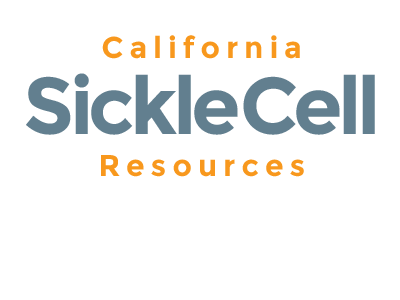Actions
Welcome to SCCCI
Community Needs Assessment
Thank you for being a part of the Needs Assessment!
In 2017-18, we surveyed and interviewed 58 people with sickle cell disease ages 15 – 48 years and 56 of their healthcare
providers and community leaders, all from Alameda, Contra Costa, Sacramento, San Francisco and Solano counties.
Our goal was to understand more about healthcare barriers for adolescents and adults with sickle cell disease, so that we
can work on making real and long lasting improvements.
Our goal to recruit 300 individuals with sickle cell disease residing in Northern California was achieved. We successfully enrolled 312 patients, and the entire registry has 2429 individuals throughout the country.
What we found . . .
84% of adolescents and adults surveyed said that they just tried to take care of their severe pain at home, rather than going to the emergency room at all.
Some Challenges Discussed:
- Pain, fatigue, emotional burden of sickle cell disease
- Bad experiences with the healthcare system
- Being accused of drug seeking
- Long waits in emergency departments
- Being questioned about pain level
- Feeling emergency providers do not really care
- Trouble finding knowledgeable or experienced providers for care
- Transportation, insurance, support systems
- Struggle finding places to go where they can learn how to stay well and to manage pain so that it does not interfere so
much with their daily life.
Positive Results:
- Adolescents and adults were most comfortable with their sickle cell providers.
- Adolescents and adults with more confidence in their ability to manage their sickle cell disease had lower pain ratings.
Providers’ feedback:
- They want to take care of people with sickle cell disease.
- But they need access to guidelines for care and care coordinators who can help individuals with sickle cell disease deal
with insurance and transportation issues. - Sickle cell and primary care providers were concerned that the behavioral and mental health needs of individuals with SCD
were not being met.
What’s Next?
- Regular meetings and better paths of communication between sickle cell providers, primary care providers, emergency
department providers, and adolescents and adults with sickle cell disease in Northern California - Educational opportunities for providers in the area, that includes patient presentations that can give the providers first
hand accounts of patients’ healthcare experiences and the impacts of those experiences on their lives - Meetings with administrators and policy makers to strategically improve sickle cell care coordination
What you can do . . .
- Stay tuned for studies that will be rolled out in Northern California and around the U.S. to
1) improve emergency department care and
2) support providers and individuals with sickle cell disease in using
hydroxyurea. - Please be a part of our Registry, that tracks the health and healthcare of adolescents and adults with sickle cell disease
from around the U.S. The Registry will allow us to know how effective our strategies are.
We are designing interventions informed by the needs assessment that are focused on improving emergency department care, access to preventive care, and patient self-management. By working with the other sites within the Sickle Cell Disease Implementation Consortium, we will be able to track our intervention outcomes across one of the largest U.S. cohorts of youth and adults with sickle cell disease to date. The interventions will be set to launch in 2019.
For more information about the SCCCI, contact:
Marsha Treadwell, PhD marsha.treadwell@ucsf.edu, (510) 428-3356
Olivia Chen yumei.chen@ucsf.edu, (510) 428-3885 x2759
Other Resources:
- Sickle Cell Community Advisory Council
Contact Name: Wanda Williams
Phone: (510) 888-4568
Email: sccacnorcal@gmail.com
- Sickle Cell Anemia Awareness of San Francisco Foundation
Contact Name: NeDina Brocks-Capla
Phone: (415) 720-4458
Email: crisis@scaasf.org
- Sickle Cell Community Health Network
Contact Name: Mary Evans
Phone: (510) 717-6504
Email: maryncali1@aol.com - Sickle Cell 101
Contact Name: Cassandra Trimnell
Phone: (415) 881-7101
Email: info@sc101.org
Sickle Cell Care Coordination Initiative
Who we are …
The Sickle Cell Care Coordination Initiative (SCCCI) seeks to improve care provided to youth and adults with sickle cell disease in Northern California. We are one of 8 programs in the U.S. funded by the National Heart, Lung and Blood Institute (NHLBI) to use implementation science to improve outcomes for individuals with sickle cell disease between the ages of 15 and 45 years.
The SCCCI brings together experts in sickle cell disease clinical care and clinical research, health services research, implementation and participatory research and emergency medicine. Our core team also includes individuals with sickle cell disease, their family members and dedicated community members.
Our aims are …
- increase the number of youth and adults with sickle cell disease who receive preventive care;
- support providers so they increase their adherence with evidence based guidelines for sickle cell disease care; and
- support youth and adults with sickle cell disease to access needed resources within their communities to improve their quality of life and quality of care. Our primary goal is to decrease the preventable morbidity and mortality that this population is vulnerable to.
The work of the SCCCI will take place in Alameda, Contra Costa, Sacramento, San Francisco and Solano counties.


Why Implementation Science?
NHLBI made a commitment to funding the Sickle Cell Disease Implementation Consortium in response to evidence that only a fraction of discovery science reaches patients in clinical practice. Americans receive, on average, only half of recommended preventive, acute and long-term quality health care. There is no better example of this issue than sickle cell disease, where evidence based guidelines are greatly underutilized. As a result, adults with sickle cell disease experience high mortality, severe pain, progressive decline in functional status and lack of access to knowledgeable care. The barriers to care, on the parts of both patients with sickle cell disease and their providers, are poorly understood, although some patients face distrust and discrimination when they do try to seek care. Implementation science takes a “systems approach” to improve health outcomes, engaging multiple sectors and multiple modalities to define and prioritize health outcomes and care issues, and to identify barriers to care. The Sickle Cell Disease Implementation Consortium is the first research program to use implementation science to identify and address barriers to quality care in sickle cell disease.
What is the plan?
We conducted a needs-based community assessment of barriers to care for youth and adults with sickle cell disease. Participants were patients with sickle cell disease, the providers who care for them, directors of services where they seek care, and interested community members who had ideas about the needs of patients with sickle cell disease and how to address them. We selected providers and people with sickle cell disease to provide us with this information via focus group or individual interviews. We also asked providers and people with sickle cell disease to complete a survey about the issues.
Information from the needs assessment is informing the next phases of the SCCCI. We are creating a registry of youth and adults within our five county area in order to track inpatient, outpatient and emergency use; complications; and such factors linked with health as access to housing, education and good medical care. We are designing interventions informed by the needs assessment focused on improving the quality of acute and preventive care and patient self-management. By working with the other sites within the Sickle Cell Disease Implementation Consortium, we will be able to track our intervention outcomes across one of the largest U.S. cohorts of youth and adults with sickle cell disease to date.
The registry is the next crucial step for the Sickle Cell Care Coordination Initiative. We are collecting information on symptoms, treatments, and concerns about medical care for youth and adults with sickle cell disease. This information will help us to see where improvements can be made in the medical care system, and with regard to community support, for sickle cell disease.




